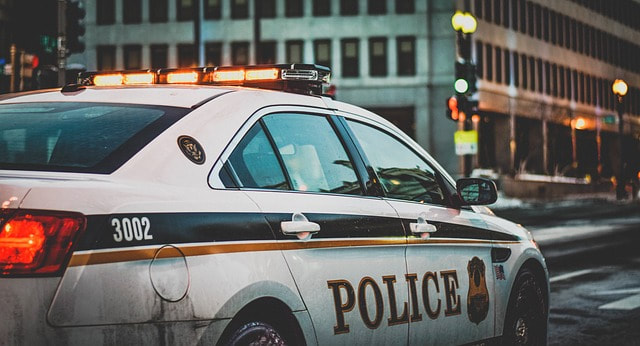|
On January 7, 2016, Officer Jason Harnett, with the Philadelphia Police Department, came under fire as he sat in his patrol car. According to reports, the attacker, Edward Archer, emptied 13 rounds into Harnett's vehicle, hitting the officer three times. Initially, Harnett spotted Archer from the corner of his eye, advancing on him with a gun. The attack happened so fast, Harnett had only a split second to react. During the trial, Harnett testified that his first instinct was to take cover. However, due to his size and the equipment mounted inside the vehicle, Harnett had little room to maneuver. As Archer fired into the vehicle, three rounds ripped into Harnett's left arm. Trapped inside his squad car, Harnett had only one option left. He had to mount a counter-attack - and fast! With his left arm hanging lifeless at his side, Harnett managed to open the door slightly with his right hand, kicking it fully open with his left foot. He then scrambled free from the car, drew his gun with his right hand and opened fire as Archer fled the scene. Harnett radioed for help with his uninjured arm, then engaged in a foot pursuit until Archer was apprehended by authorities some blocks away.
Thankfully, Harnett is alive today. We should all take a moment to thank God that heroes like Jason Harnett exist. We should also seek out the lessons these stories can teach us if we're willing to learn. Here's a few that stuck me: 1. It happens fast. Harnett said he had only "a split second" to respond from the moment he saw Archer to first shots fired. If you're familiar with Boyd's OODA cycle, you know that the person who makes the right decisions faster tends to prevail in combat. One way to shorten the decision-making process is through proper training. 2. React to ambush. Essentially, there are two ways to respond to an ambush. The first option is break contact by vehicle or on foot. The other option is to assault through. Yes, you read that right: assault through the ambush itself. Use the vehicle as a weapon or mount a counter-attack another way - whatever it takes. Harnett was in a terrible position. With the attacker so close, he didn't have time to drive away to safety. As the bullets rained down, his squad car was only seconds away from becoming his coffin. His only option was to counter-attack, but he had to fight his way out of the vehicle first. 3. Firing one handed. I've heard it said, "it's a handgun, not a hands gun." Shooting two-handed is a luxury, not a right. Just ask Officer Harnett. Research from police involved shootings indicate it's not uncommon for officers to sustain a wound to their hand during a gunfight. It happens more than you think. The question for you is, can you shoot, reload and clear a malfunction one-handed? The data suggests you should. 4. Fighting from unorthodox positions. Flat ranges are good to build fundamentals, but you have to progress from there if you want to build true tactical skills. Grab a blue gun or clear and make safe your carry weapon. Practice dry-firing from unorthodox positions. Practice drawing from inside a vehicle, sitting down, kneeling behind cover, etc. Don't forget to practice moving from different points of cover or from a position of disadvantage. May God grant us the courage, skill, and strength of character to fight and prevail over those who would do us harm. Stay sharp, Mark
1 Comment
|
Archives
November 2023
Categories |



 RSS Feed
RSS Feed